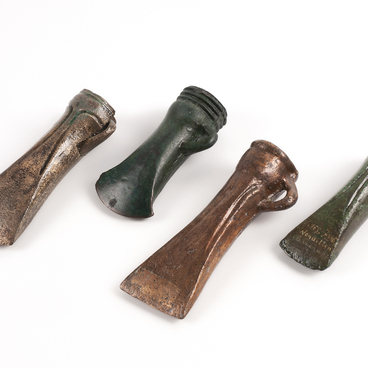The first people appeared on the territory of the modern Kaliningrad region about 13 thousand years ago. They were small groups of hunters who migrated after herds of reindeer, developing the spaces of Northern Europe and following the retreating glacier. Gradually the climate became milder. The areas freed from ice began to be covered with broad-leaved forests.
People adopted a sedentary way of life. Between the 3rd and 2nd millennia B.C., the foundations of material and spiritual culture were laid. Around the middle of the Neolithic period, the technique of drilling through holes for ax handles using tubular bone developed in the region.
The bone was wrapped with a bowstring and clamped together with a stone in a vise made of sticks. Sand was poured under the bone to increase friction. The material for the new axes was no longer flint, but softer rocks such as diorite, granite and other rocks. The hole for the ax was drilled from the upper side of the stone blank. As the bone was drilled, it became thinner, so the hole took the shape of a cone: it was wider at the top than at the bottom.
The first drilled axes were wedge-shaped with wide blades. As time went on, their shape became finer and finer, and their surface was sanded. The axes were of various shapes, but all of them were designed not so much to hack as to chop.
Gradually, mankind learned to process and use metal. The transition period from the Stone Age to the Bronze Age can be seen in the stone axes, which, on the one hand, demonstrated the highly developed craft structure of the Neolithic, and, on the other hand, imitated metal samples of highly developed cultures of the Bronze Age, sometimes even with the semblance of a “foundry seam”.
Standing
out among these exhibits is a spherical mace head. Such a striking and crushing
weapon could be used not only for close combat, but also as a throwing weapon.
The mace could strike a quick blow in any direction. As a rule, the length of
the weapon’s handle was about 50–80 centimeters, and the weight of the tip was
between 200 and 300 grams.


